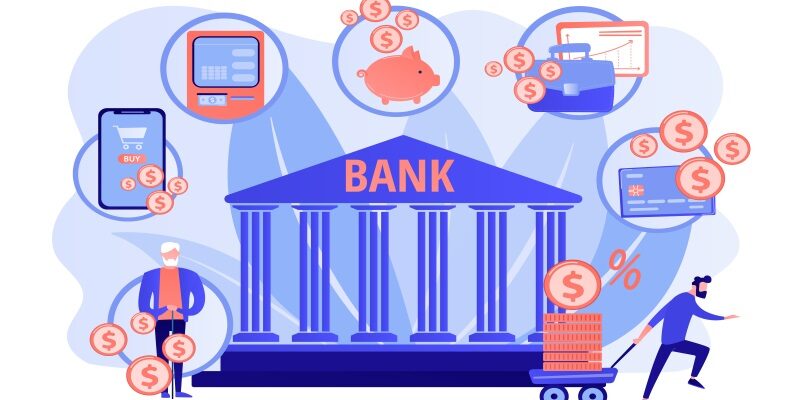The MSME sector is a growth engine for the economy and the nation’s overall development because of its enormous potential as a source of employment and equitable development. Over 100 million people are employed by India’s 63 million Micro, Small, and Medium-Sized Enterprises (MSMEs).
MSMEs could push the government’s ambitious objective of a $5 trillion economy; hence it is critical to provide them with every resource possible.
There are many barriers to the sector’s expansion in a post-Covid-19 environment, including lack of institutional financing, current technology, shortage of skilled labour, and restricted access to international markets. And only through the combined efforts of the government and banking institutions can they be overcome. Banks have also been essential in providing financial aid through a range of tailored loan programmes, utilising cutting-edge technologies for a flawless process. For instance, a bank in India offers specially designed loan programmes for small enterprises, including loan monitoring and collateral management.
Only a very small percentage of businesses are able to raise angel capital easily, while the majority still struggle to enter the lending and management cycle. Since the sector is still unregulated, it’s also crucial to recognise the emerging financial trends that are supporting MSMEs and, most critically, bridging their credit gap. Most banks deem MSMEs and their credit histories unsuitable for financial assistance. In addition to MSMEs, entrepreneurs face comparable financial issues and are caught in a loop of trying to get a loan approved while knocking on bank doors.
According to estimates from the International Finance Corporation (IFC), over 65 million businesses, or nearly 40 per cent of formal micro, small, and medium-sized enterprises (MSMEs) in developing countries, have an annual unmet financing requirement of $5,200 billion.
According to a report by the RBI, India’s overall commercial lending exposure was $919.06 billion as of June 2020 with only 25.27 per cent, or $232 billion, of that amount held by the MSME sector. Additionally, the estimated credit gap for Indian MSMEs, which exceeds the supply of funding from the official sector, is enormous, at over $219 billion.
The landscape of MSME financing has significantly changed during the last few years. Despite having a relatively modest proportion in the lending market, the industry has seen a rise in credit flow. The market, which was formerly controlled by public sector banks and conventional lending procedures, has recently seen the introduction of new, creative alternative lending platforms, private banks, and NBFCs, especially NBFCs.
Fintech-enabled NBFCs are forging a hassle-free path to effective and specialised credit solutions for MSMEs, notwithstanding their relative youth. The development of this high-potential, high-value sector and the promotion of broader financial inclusion throughout the nation are being aided by the application of modern technology and digital tools like AI, machine learning, and data analytics.
However, it is obvious that no one remedy can close the gap and establish an enabling environment, given the amount of the problem related to a lack of funding. Therefore, new financing models must be introduced and adopted in order to alleviate the apparent credit gap.
Alternative funding methods like TReDS, peer-to-peer lending, equity financing, etc. have a lot of room to expand. With the COVID 19 pandemic disrupting global economic activity, fintech, banks, and NBFCs will play a far larger role in supporting small businesses in the post-pandemic new world than they already do.
Adopting new lending models will not only strike the proper balance for financial stability but also stimulate attention to the country’s small company credit needs, with NBFCs and fintechs possibly better suited to assist in this effort. Aatmanirbhar Bharat can be realised through the ongoing development of the MSME lending landscape, which may be seen as one more step in that direction.
The pivotal role of Fintech in credit availability to MSMEs
Only a very small percentage of businesses are able to raise angel capital easily, while the majority still struggle to enter the lending and management cycle. Since the sector is still unregulated, it’s also crucial to recognise the emerging financial trends that are supporting MSMEs and, most critically, bridging their credit gap. Most banks deem MSMEs and their credit histories unsuitable for financial assistance. In addition to MSMEs, entrepreneurs face comparable financial issues and are caught in a loop of trying to get a loan approved while knocking on bank doors.
The banking industry has seen a notable transition with the addition of fintech, which is accelerating the growth rate of MSMEs. Fintech employs advanced technology, such as artificial intelligence and machine learning, to operate on a simplified and digitalised financial paradigm. Having said that, fintech businesses also fare much better when supplying financial help to MSMEs and entrepreneurs than traditional banking approaches.
MSMEs can align with the financial sector and learn about the measures needed to secure an investment, thanks to fintech. Investors are constantly looking for businesses, especially MSMEs, to lend to, but they are less responsive because of a lack of presence and data.
By using cutting-edge technology and predictive analytics/algorithms, fintech companies open a channel for investors and MSMEs to align and meet one another needs, bridging the credit gap. Fintech firms assist MSMEs in submitting tax returns, offering credit ratings, and educating the incumbents on how to raise their credit scores. The instruments evaluate the small business’s assessment, sales, and other financial aspects and file tax returns on their behalf. This advanced function allows users to use their time better to develop their business skills by eliminating the need to comprehend the intricate tax ramifications.
Fintech businesses have been able to leave their mark on the process of risk appraisal and assessment. The companies lending money to MSMEs require a thorough review of the risks involved. As a result, banks and financial firms have been using fintech firms to develop consumer risk profiles.
The lenders can make firm decisions about loan approvals and disbursements based on these risks. Fintech organisations offer mathematical analysis and technologically sophisticated models that operate at breakneck speed to produce an accurate risk profile for worried clients in the shortest time.
Mobile wallets have expanded along with the growth of online shopping and digital payments. With fintech companies in charge, it will become easier to distribute loans, get credit, and streamline finances thanks to this ecosystem. MSMEs must become technologically sophisticated and smart in the near future to work successfully so they can enjoy flawless operations in the market environment.








